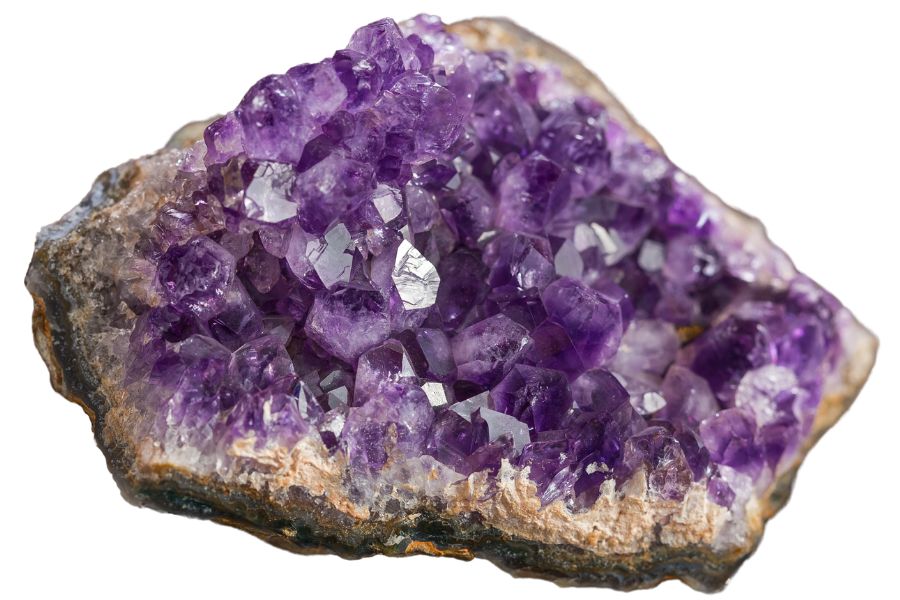The state of Iowa may not be the first place you think of when it comes to valuable rocks, minerals, and gems, but you’d be surprised at what’s hiding beneath the surface.
From stunning galena, which is prized for its lead content, to rose quartz that can add a beautiful touch to any collection, Iowa has some hidden gems just waiting to be discovered.
Whether you’re an experienced collector or just someone looking to make a little extra cash by selling what you find, these minerals can be both fascinating and valuable.
In this guide, we’ll show you not only what you can find in our great state but also where to look. So grab your gear, and let’s dive into the world of Iowa’s valuable rocks and gems!
The Most Valuable Rocks, Minerals, And Gems You Can Find In Iowa
Embark on a journey to uncover the state’s most thrilling stones!
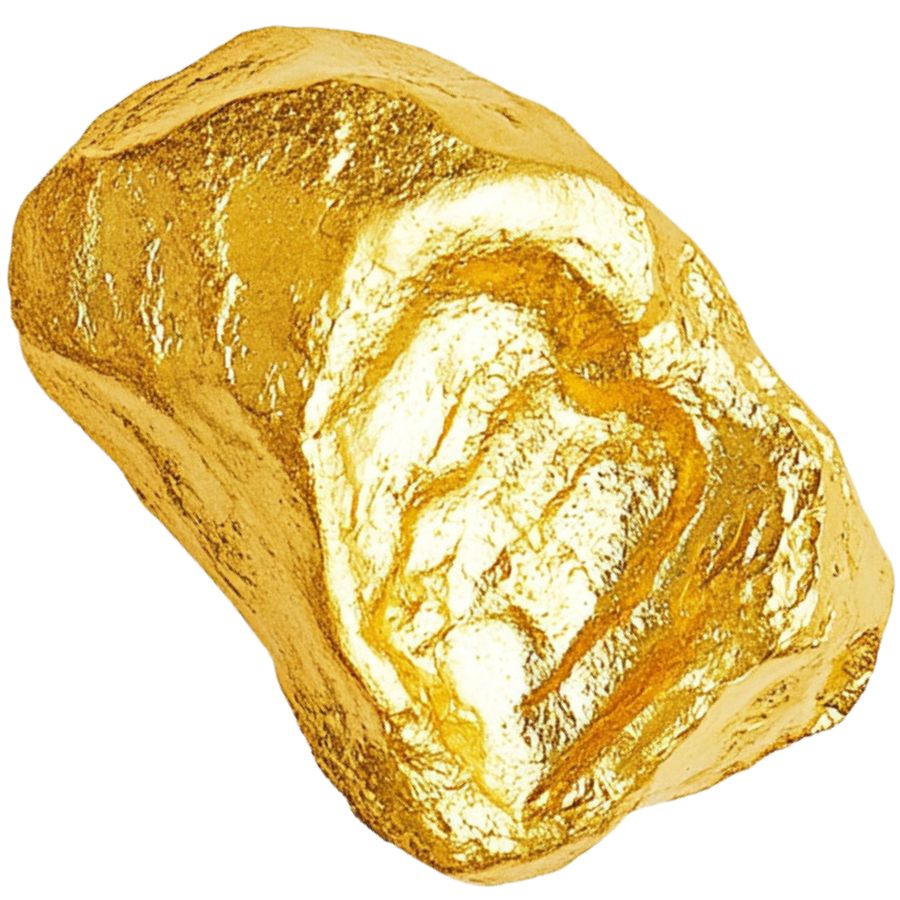
Gold
Gold is one of the most well-known and valuable metals in the world, and Iowa is one of the few states where you can find it, even if it’s not as abundant as in other parts of the country.
The gold found in Iowa is typically placer gold, which means it’s been washed down from upstream areas and is found in streams and riverbeds. This gold often comes in small flakes, but there’s also the possibility of finding nuggets, although they’re much rarer.
Why It’s Valuable
Gold has been prized for centuries because of its rarity, beauty, and usefulness. It can be valuable for collectors or people interested in refining it for its metal content.
It also has industrial uses, but the most common value is in jewelry and investment. Plus, there’s something thrilling about finding gold in your own backyard, especially in a state like Iowa where it’s not as commonly found.
Want to uncover more? Check out our ultimate guide to finding Gold in Iowa.
Great Places to Find It Here
If you’re looking to try your luck and see if you can find some of that glittering gold in Iowa, here are a few places that you can check out:
- Big Sioux River – This river, which forms part of the border between Iowa and South Dakota, has historically yielded small amounts of gold. Panning along the riverbanks could reward you with a little glimmer of gold.
- Cedar River – This river has been known to have gold flakes deposited in its sands. It’s thus a popular spot for recreational gold panning.
- Northwest Iowa – Areas in the northwest, near the Missouri River, are believed to have seen some historical gold panning, so it’s worth checking out some of the smaller streams and riverbeds in the region.
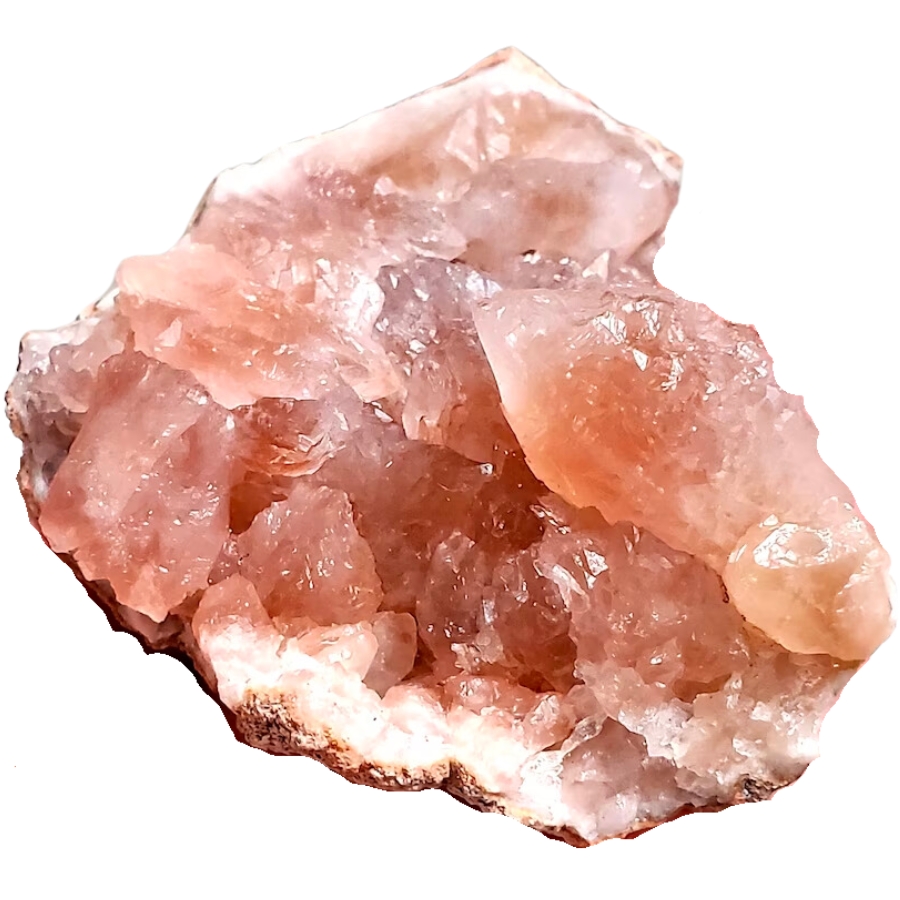
Rose Quartz
Rose quartz is a beautiful pink to rose-colored variety of quartz with a gentle, calming appearance. It’s known for being a semi-precious gemstone often associated with love, compassion, and emotional healing.
You can find rose quartz in its typical pink form, but it’s not as common as other minerals in the state. The rose quartz here is typically found as rough, translucent crystals, depending on where you find it.
Why It’s Valuable
Rose quartz is valuable because its soft pink color is rare in large, high-quality pieces. It is also durable enough to be cut and polished for jewelry or decorative items without breaking easily.
Some pieces have a translucent or milky look that makes them even more desirable.
Great Places to Find It Here
If you’re interested in hunting for rose quartz in Iowa, there are a few spots where you might be lucky enough to find some beautiful pieces:
- Floyd River – The Floyd River area in northwest Iowa is another location where rose quartz has been discovered. Here, you can check the riverbanks and gravel beds for rose quartz crystals that have been naturally smoothed by the water.
- Amana Colonies – This area has been known for mineral deposits, including rose quartz. You can find small chunks of rose quartz along the streambeds and rocky areas near the colonies.
- Clear Lake – Near the northern part of the state, Clear Lake and its surrounding areas are home to various types of quartz, including rose quartz. Walking the beaches and sifting through the rocks along the shore might reveal some beautiful pieces.
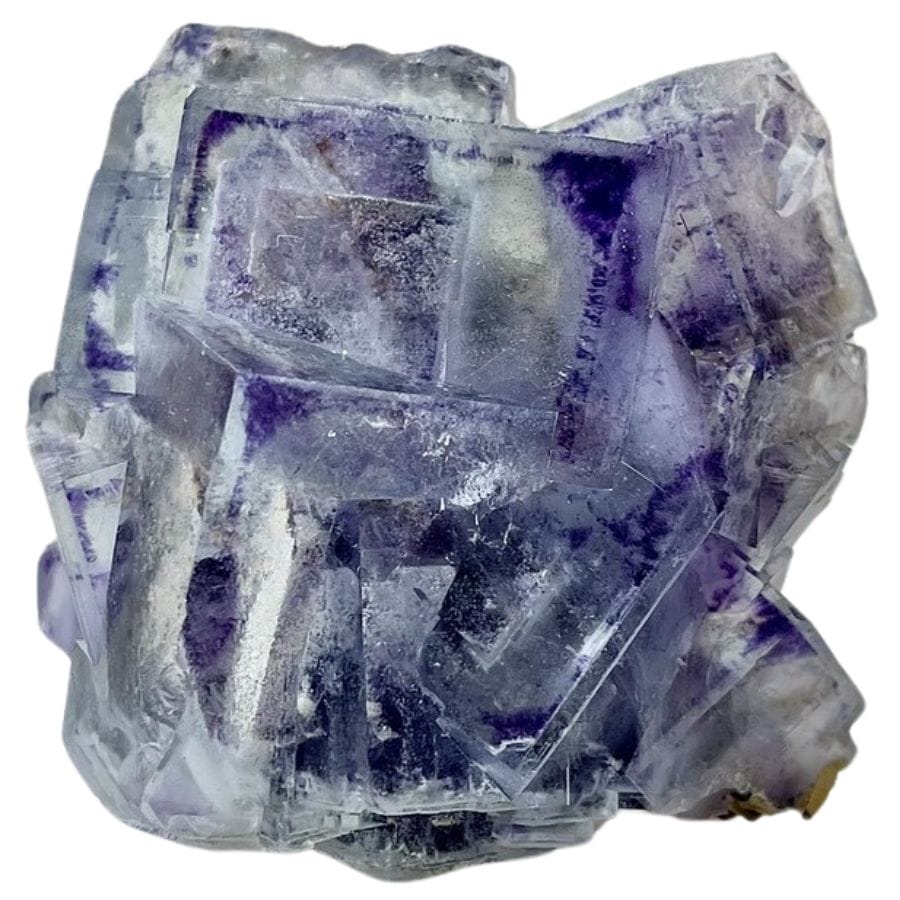
Fluorite
Fluorite is a colorful mineral that comes in a variety of hues, ranging from green and purple to yellow and blue. It’s known for its crystal-clear clarity and its ability to fluoresce under ultraviolet light, giving it a glowing effect.
In Iowa, fluorite is usually found in green and purple varieties, though you may occasionally come across some yellow or blue pieces. It’s often found in small, cubic or octahedral crystals.
Why It’s Valuable
Fluorite is valuable for both its beauty and its industrial uses. It’s a key mineral used in the production of aluminum, uranium fuel, and even in the manufacturing of certain glasses.
It’s also aesthetically appealing. The vibrant colors and crystal formations make it a favorite among those who enjoy rock and mineral collecting.
Great Places to Find It Here
If you’re keen on hunting for fluorite in Iowa, there are a few prime spots where you might get lucky and find some colorful crystals:
- Linn County – Linn County has a few spots where fluorite can be found among the rocks and gravel. Pay close attention to the riverbeds and gravel pits, where pieces of fluorite are occasionally uncovered.
- Benton County – Benton County has been known to produce some beautiful specimens of fluorite. The area’s limestone deposits often contain fluorite crystals, and collectors sometimes find them in stream beds or near the rock quarries.
- Southeast Iowa – Areas around the Mississippi River, particularly near Keokuk, are famous for their mineral deposits, including fluorite. The riverbanks and surrounding rocky areas can be a great place to search for fluorite crystals that have been naturally exposed.
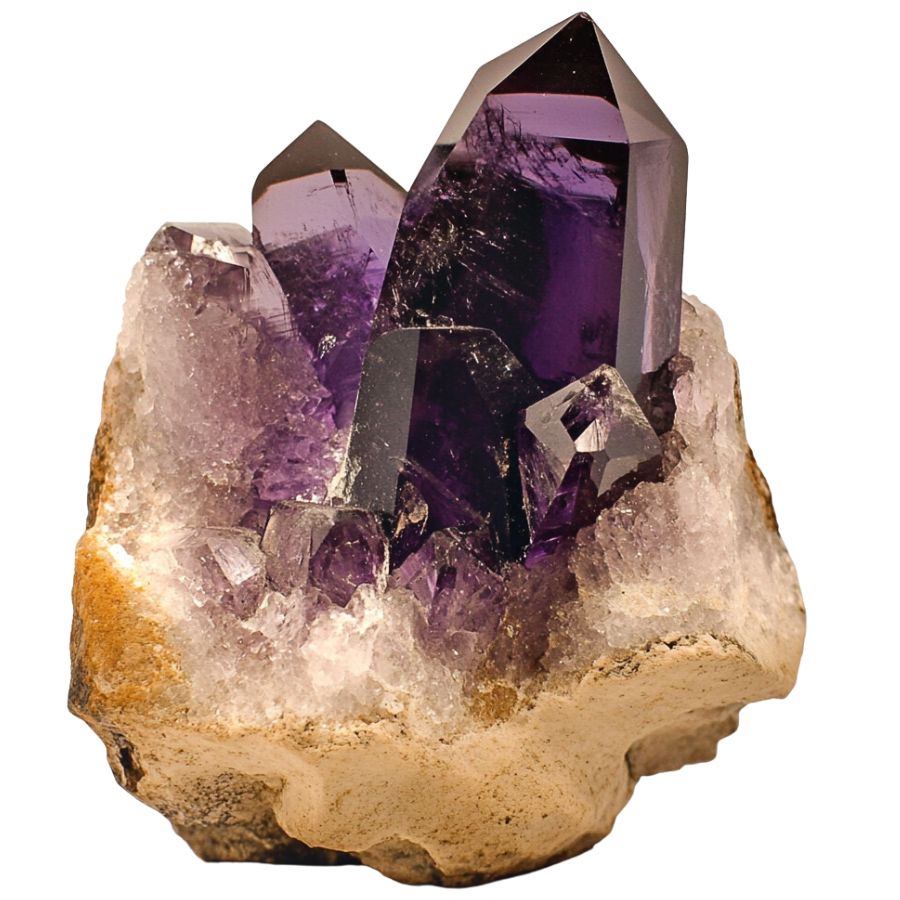
Amethyst
Amethyst is a beautiful purple variety of quartz and is one of the most popular gemstones in the world. The color can range from light lavender to deep violet, and it’s known for its rich, vibrant hues.
While the most common form found in the state is the classic purple amethyst, some specimens may have lighter or more reddish hues depending on their mineral content and formation process.
Why It’s Valuable
As a gemstone, amethyst is used in jewelry, especially in rings, necklaces, and earrings. Beyond its use as a gem, amethyst has a long history of being considered a symbol of peace, calm, and clarity.
The striking purple color also makes it a favorite among collectors. In Iowa, finding amethyst crystals, particularly within geodes, is exciting for collectors who value the beauty and rarity of these pieces.
Great Places to Find It Here
If you’re looking to hunt for some amethyst in Iowa, there are a few spots where you might have the best luck:
- Wapello County – Wapello County is another area in southern Iowa where collectors can find amethyst. Look for geodes in this region, as they sometimes contain amethyst crystals. You might even find some smaller pieces scattered along the ground or riverbeds.
- Keokuk – Keokuk is one of the most famous spots in Iowa for mineral collecting, and amethyst is among the prized finds here. The geodes found in the area often contain beautiful amethyst crystals. If you head to the Keokuk Geode State Park, you’ll have a chance to find amethyst inside geodes that have been exposed by erosion.
- Mississippi River Bluffs – Along the Mississippi River, especially near the bluffs in eastern Iowa, you can sometimes spot amethyst crystals within the limestone deposits. Searching along these bluffs or in exposed rocky areas can yield some impressive finds, including amethyst.
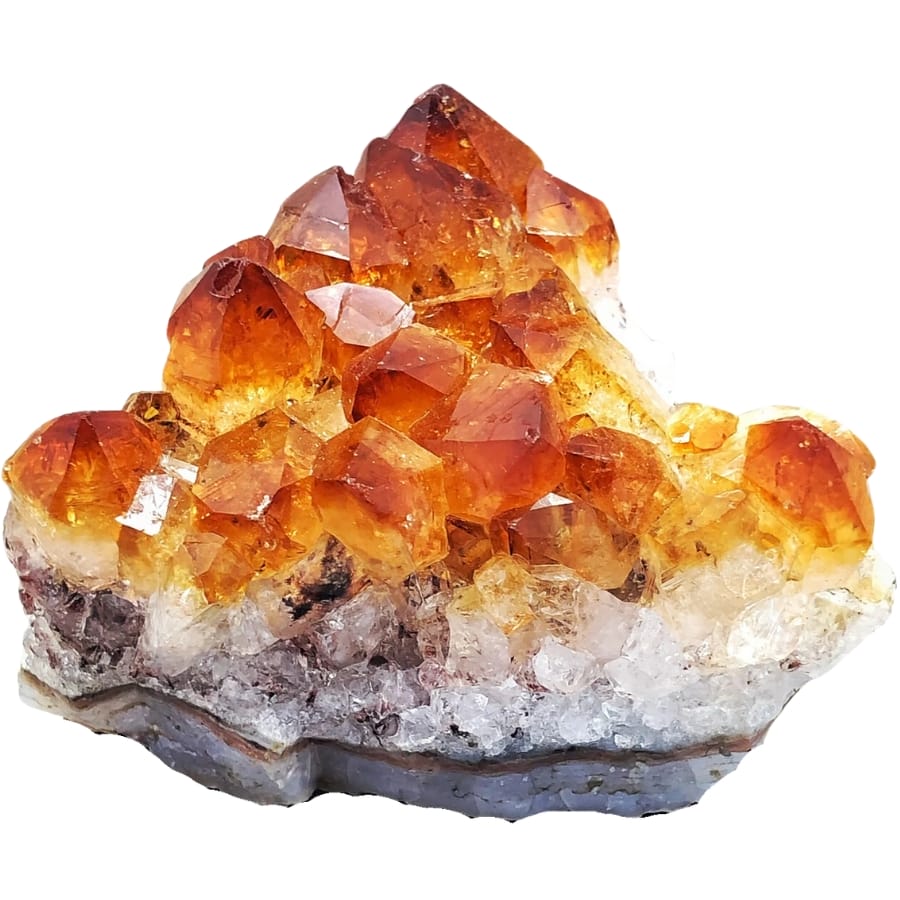
Citrine
Citrine is a striking yellow to golden-brown variety of quartz. The name “citrine” comes from the French word for lemon, and it’s easy to see why with its sunny, lemony hues.
In Iowa, citrine is typically found as part of geodes, sometimes forming small clusters of crystals. Unlike other quartz types like amethyst or rose quartz, citrine’s warm golden tones make it easily recognizable.
Why It’s Valuable
Citrine is valued both for its beauty and its relatively rare golden color, especially in the world of gemstones. Its bright and sunny appearance makes it a popular choice for jewelry, especially in rings and necklaces.
Great Places to Find It Here
If you’re looking to hunt for citrine in Iowa, there are a few spots where it’s more likely to turn up:
- Wapello County – Wapello County has been known to produce some great geode finds, including citrine. Whether you’re looking along riverbanks or in exposed rock layers, the county offers a good chance of discovering citrine crystals nestled within geodes.
- Keokuk Geode State Park – While amethyst often steals the show, citrine can also be found here in some of the geodes. The area is rich in mineral deposits, so it’s an ideal spot to begin searching.
- Mississippi River Valley – The region around the Mississippi River, particularly along its bluffs, is home to many mineral-rich deposits. Citrine crystals have been known to form in geodes found here, so it’s worth exploring these areas for a chance to find this stunning stone.
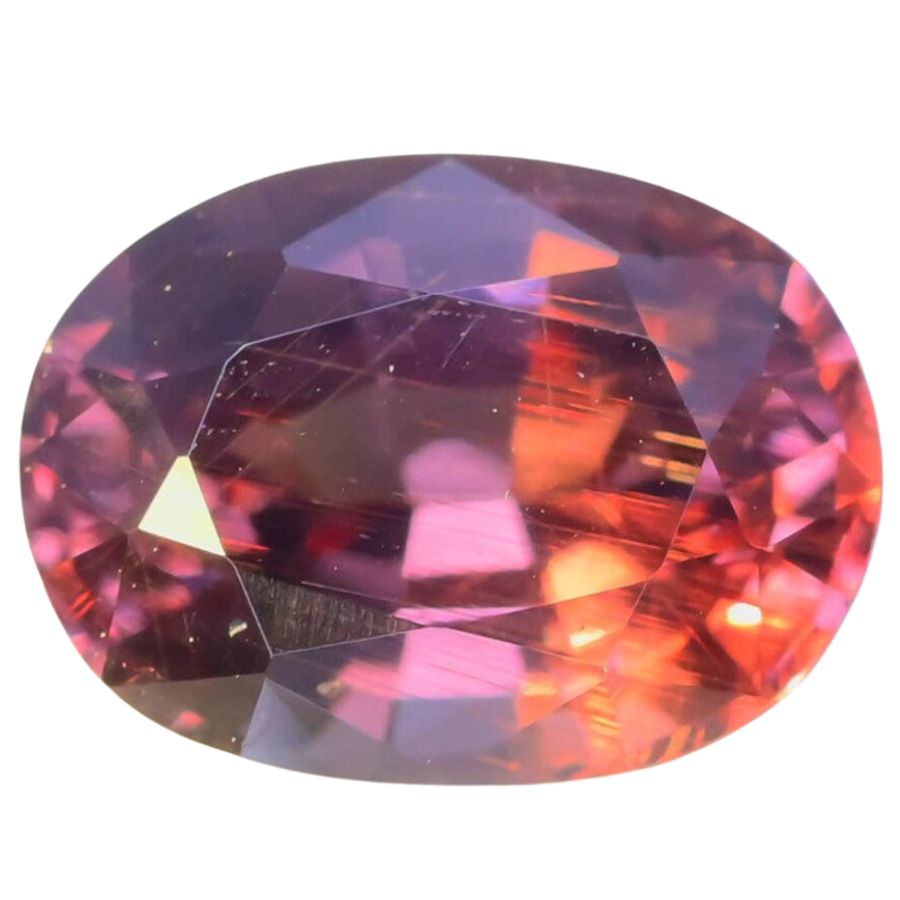
Garnet
Garnet is a beautiful, deep red gemstone that is known for its striking color and durability. While it is most commonly associated with a rich red hue, garnet can actually come in a variety of colors, including green, yellow, and even colorless.
The types of garnet that can be found here include almandine, which is typically deep red, and pyrope, which can also have a similar rich color. Garnet is found in some of Iowa’s mineral deposits, especially in areas with a lot of sedimentary rock and old riverbeds.
Why It’s Valuable
Garnet is valued for its beauty and versatility. While it’s commonly used in jewelry, it also has industrial uses as an abrasive due to its hardness. The deep red garnets, in particular, are highly sought after for their rich color and are often used in rings, necklaces, and other accessories.
Aside from its aesthetic value, garnet has some historical significance, as it has been used in jewelry and decoration for centuries. In Iowa, garnet’s value lies not only in its appearance but also in its rarity, since it’s not as common as other stones found in the state.
Great Places to Find It Here
If you’re looking for garnet in Iowa, there are a few great spots to search for this gorgeous stone:
- Wapsipinicon River – The Wapsipinicon River in eastern Iowa is another great spot for finding garnet. Like the Mississippi River, the shifting sands and gravel beds along the riverbanks have revealed various minerals, including garnet.
- Decorah – Decorah is located in the northeastern part of Iowa, and it has many exposed rock formations where garnets have been found. You can find garnets in creek beds or along the bluffs, where water has worn down the rocks to expose these hidden treasures.
- Northeast Iowa’s Driftless Area – The Driftless Area in northeast Iowa is a geologically unique region that wasn’t affected by the glaciers that moved through much of the state. This area has exposed rock layers, and it’s here where you might find garnet crystals hidden in some of the sedimentary rocks or gravel beds.
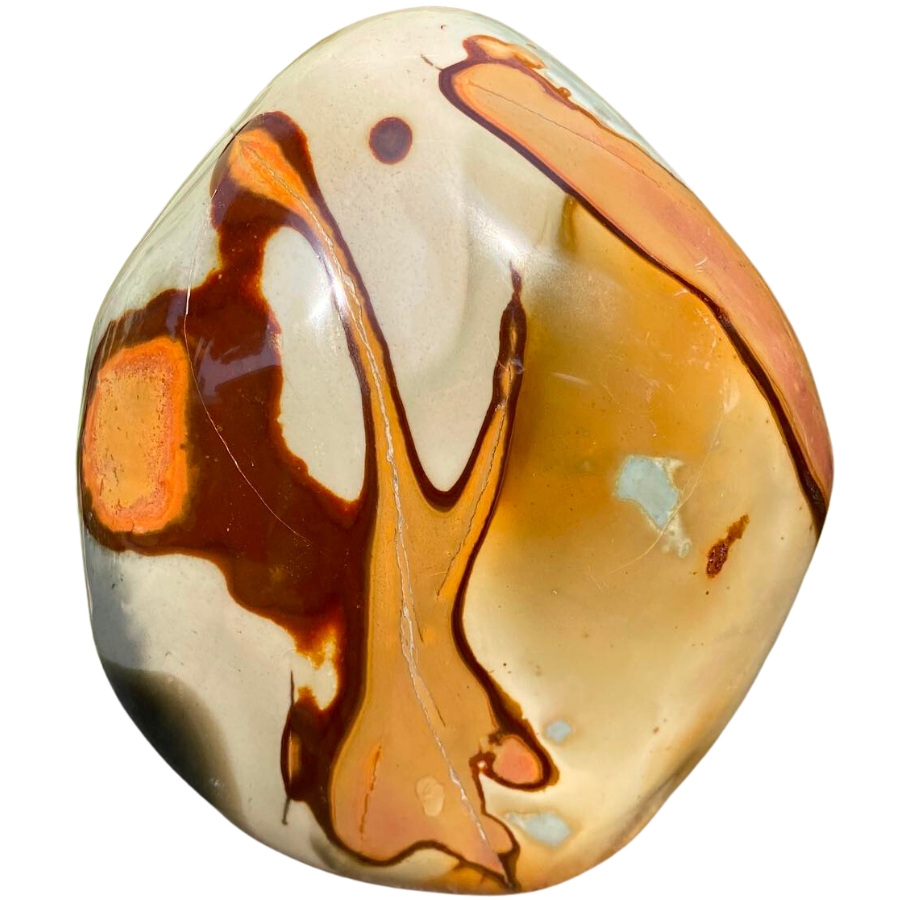
Jasper
Jasper is a type of chalcedony, which is a variety of quartz, and it’s known for its beautiful, solid colors and striking patterns. It can come in a range of colors, from reds and browns to greens, yellows, and even purple.
What makes jasper so unique is that it often has intricate patterns like spots, stripes, or swirls, which make it really fun to find and collect.
Some jasper found in Iowa also includes variations like brecciated jasper, which is made of pieces of broken rock cemented together, creating a distinctive appearance.
Why It’s Valuable
Jasper is valuable for a few different reasons. First, its beauty makes it a popular stone for jewelry and decorative items. Many people love to use jasper in beadwork, necklaces, bracelets, and even carvings because of its rich colors and unique patterns.
Beyond its aesthetic appeal, jasper has been historically used as a protective stone, believed to have grounding and healing properties.
Great Places to Find It Here
If you’re looking for jasper in Iowa, there are several places you might want to check out:
- Des Moines River – The Des Moines River runs through the central part of Iowa and offers a variety of places where you can search for jasper along its banks. The river’s erosion helps expose a mix of jasper stones, which can often be found near tributary streams and sandbars.
- Palo Alto County – Located in the northwestern part of Iowa, Palo Alto County has an abundance of gravel and clay deposits that often contain jasper. Search along riverbeds and in the soil after a rainfall, when stones are washed to the surface.
- Loess Hills – The Loess Hills in western Iowa are known for their unique geology, with wind-deposited soils and rock formations. These hills often reveal hidden gems like jasper, especially along the bluffs and creek beds.
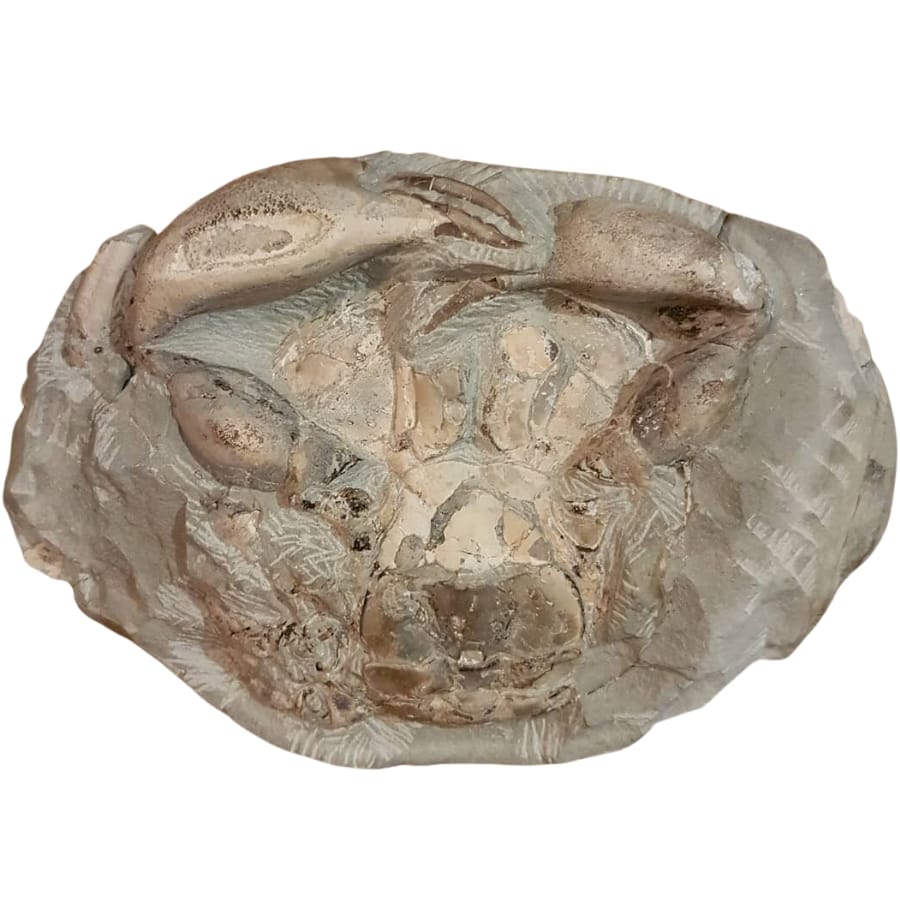
Fossils
If you’re into fossils, Iowa has some pretty cool finds waiting for you. Fossils are the remains or imprints of ancient plants and animals, often preserved in sedimentary rocks. Iowa’s geological history has led to the preservation of fossils from creatures that lived hundreds of millions of years ago, making it a great place to hunt for fossilized treasures.
The state is rich in fossils, particularly from the Paleozoic era, and there are many different types to discover. From prehistoric sea creatures to early land plants, fossils tell a story of ancient life.
Why It’s Valuable
Fossils are valuable not just because they are rare, but because they offer a window into the past. They allow scientists to study how life on Earth evolved and how the environment has changed over millions of years.
For collectors and hobbyists, fossils are also valuable as unique and often beautiful pieces of natural history. Plus, finding a rare fossil in Iowa can give you a piece of history that’s millions of years old! Want to know more? Dive into our guide on finding Fossils in Iowa!
Great Places to Find It Here
If you’re eager to start your fossil hunting, there are a few places in Iowa where you’re more likely to find these ancient treasures:
- Jordan Creek – Located in Des Moines, Jordan Creek and its surrounding areas are popular for fossil hunting. The creek cuts through layers of rock from the Mississippian period, offering up fossils like ammonites and various invertebrates.
- West Branch Area – This area is known for its rich deposits of limestone and shale, where fossils from the Devonian period can be found. You’ll be able to spot various sea creature fossils, such as brachiopods, trilobites, and corals, along the creek beds and quarries in the region.
- Clinton County – This county in southeastern Iowa is home to several old quarries and creek beds where fossils are abundant. The area is known for well-preserved fossils of ancient sea creatures, including brachiopods, trilobites, and even some early plants.
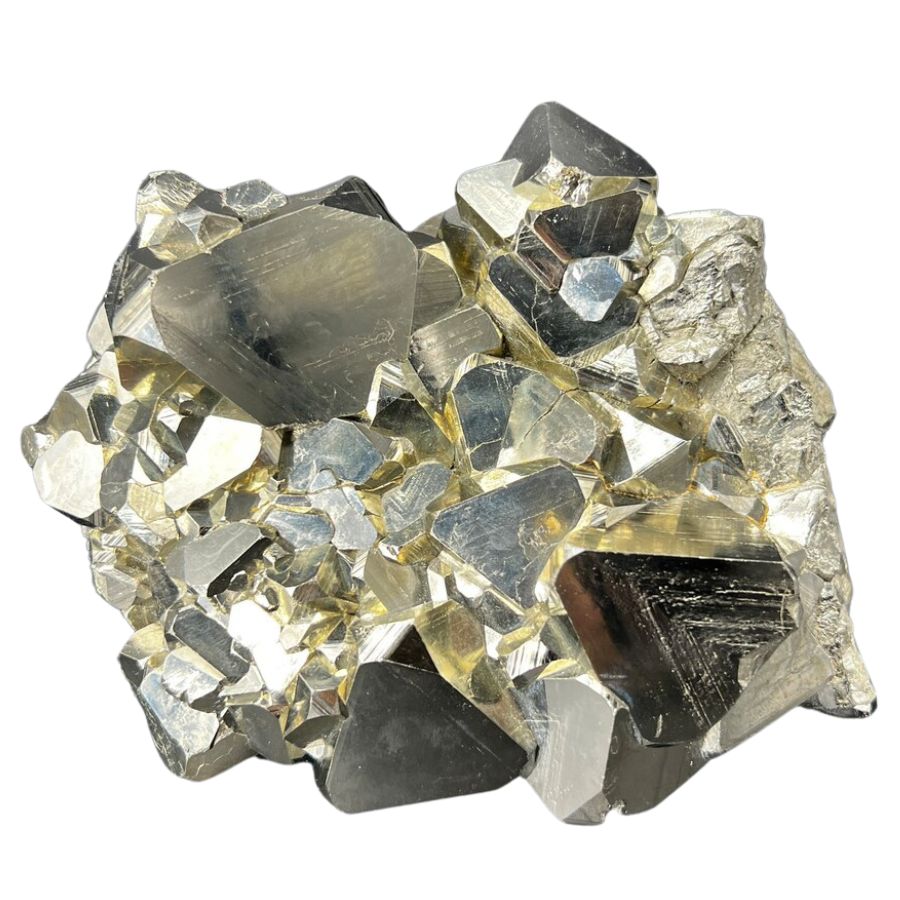
Pyrite
Pyrite, often called “fool’s gold,” is one of those minerals that sparks curiosity the moment you spot its shiny, golden surface. It might not be real gold, but it still holds its own charm. Here in Iowa, pyrite can be found embedded in rocks, particularly in areas with a history of ancient geological activity.
What It Is and the Types Found in the State
Pyrite is an iron sulfide mineral that often forms in cubic crystals or masses with a metallic luster. In Iowa, you’re most likely to find small pyrite crystals or nodules in sedimentary rock layers, like limestone and shale.
These are remnants of ancient marine environments that once covered the state. While you won’t find giant clusters of pyrite here, the smaller specimens you come across are still dazzling and fun to collect.
Why It’s Valuable
Even though pyrite isn’t real gold, it has a unique appeal for collectors and geology enthusiasts. Its bright, metallic sheen makes it a striking addition to any rock collection.
Pyrite also has some industrial uses, particularly in the production of sulfuric acid. On top of that, it’s a great educational tool for anyone learning about Iowa’s geological history.
Great Places to Find It Here
If you’re ready to go on a pyrite hunt, here are a few places in Iowa where you can try your luck:
- Mines of Spain State Recreation Area – Located near Dubuque, this area is rich in geological history and offers exposed rock formations where you might find pyrite crystals alongside other minerals.
- Cedar Valley Region – This region, particularly in areas with exposed Devonian rock layers, is known for yielding pyrite crystals embedded in shale and limestone.
- Quarries in Eastern Iowa – Many limestone quarries in eastern Iowa, like those near Maquoketa, can turn up small pyrite crystals. Just be sure to get permission before exploring any private property.
Pyrite might not make you rich, but its beauty and connection to Iowa’s ancient past make it a treasure worth finding. Let’s grab our gear and head out—it’s time for some rock hunting!
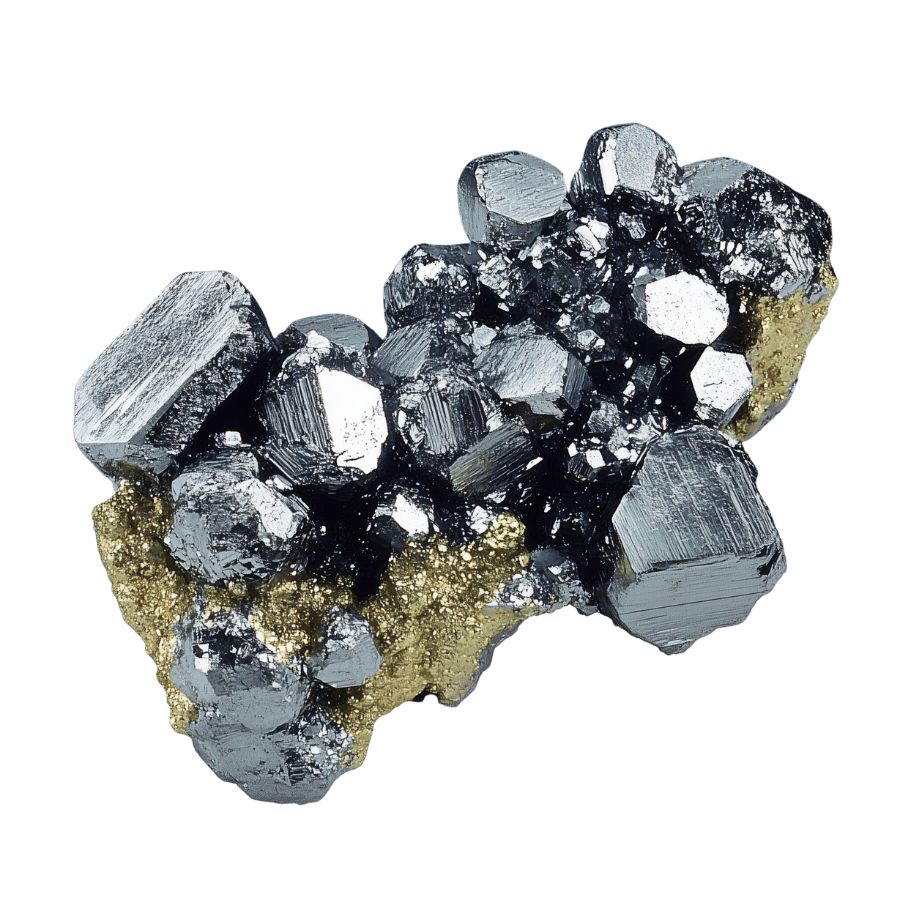
Galena
Galena is one of the most intriguing minerals you can find in Iowa, especially if you’re into shiny, metallic-looking rocks. It’s a lead sulfide mineral and is often found in cubic crystals that sparkle in the light.
Iowa’s geological history includes areas rich in galena deposits, making it a great state to explore if you want to see or collect this classic mineral.
What It Is and the Types Found in the State
Galena is a heavy, metallic mineral with a bright silver color and a natural cubic structure. It’s primarily composed of lead and sulfur and is often associated with other minerals like sphalerite and pyrite.
In Iowa, galena deposits are most commonly found in the northeastern part of the state, where the rock formations are rich in sulfide minerals. You’ll usually see galena in clusters or as individual crystals embedded in limestone or dolomite.
Why It’s Valuable
Galena has been mined for centuries because it’s the most important source of lead. Lead has countless industrial uses, from batteries to construction materials.
Beyond its practical value, galena is also a favorite among mineral collectors because of its striking appearance and perfectly shaped cubic crystals. Finding a piece of galena feels like discovering nature’s own artwork!
Great Places to Find It Here
If you’re ready to hunt for galena, there are some excellent spots in Iowa where you’re likely to strike gold—well, silver, in this case:
- Clayton County – Known for its rocky bluffs and quarries, this county offers plenty of opportunities to find galena crystals, often alongside other minerals like calcite and quartz.
- Dubuque Area – Northeastern Iowa near Dubuque is a hotspot for galena, thanks to its history as a mining hub. Many of the old mining areas and rock outcrops are still great for finding specimens.
- Upper Iowa River Valley – The limestone and dolomite formations in this area are rich in sulfide minerals, including galena. Exploring riverbanks and exposed rock formations can lead to some great discoveries.
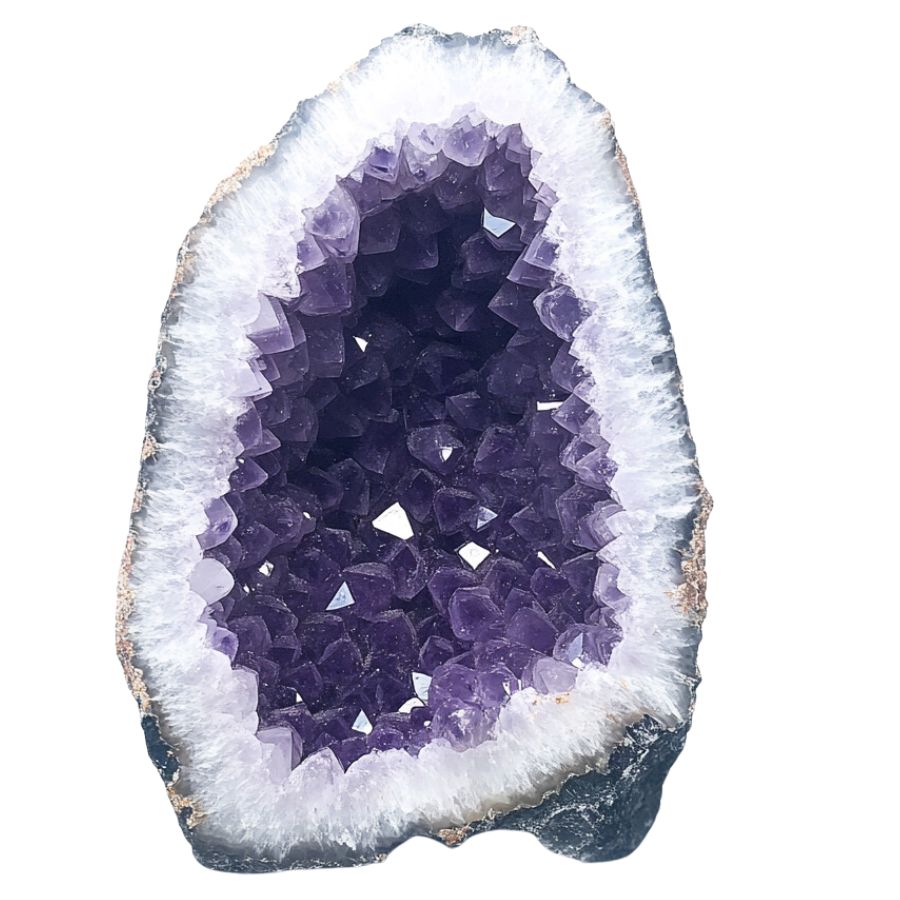
Geodes
Geodes are one of Iowa’s coolest natural treasures. These seemingly ordinary rocks hide dazzling crystal-filled cavities inside. They’re like nature’s mystery boxes—crack one open, and you never know what stunning patterns or colors you might find. Iowa is famous for its geodes, and if you love rockhounding or just collecting beautiful pieces of nature, this state is a fantastic place to search.
What It Is and the Types Found in the State
Geodes are hollow, spherical rocks that form in volcanic or sedimentary environments. Inside, they’re lined with crystals, often made of quartz, calcite, or other minerals.
Iowa is particularly known for quartz-filled geodes, but you can also find ones with amethyst or chalcedony. The southeastern part of the state, near the Mississippi River, is especially rich in geodes, making it one of the best places in the U.S. for these natural wonders.
Why It’s Valuable
The value of geodes comes from their beauty and uniqueness. No two geodes are exactly alike, which makes them highly collectible. They’re popular among both amateur and professional collectors, and larger or more colorful specimens can be quite valuable.
Besides their monetary worth, geodes are fascinating from a geological perspective—they’re like time capsules of the Earth’s history, showing how crystals formed over millions of years.
Great Places to Find It Here
Iowa has some top-notch geode-hunting spots that will have you coming back for more. Here are a few of the best places to explore:
- Farm Fields and Creeks in Lee County – Many geodes are unearthed in fields and along creek beds in Lee County, especially after heavy rains. Just be sure to ask permission if you’re venturing onto private land!
- Keokuk Area – Known as the “Geode Capital of the World,” Keokuk and its surrounding areas are legendary for their abundant and high-quality geodes. Many private sites and pay-to-dig locations are available for collectors.
- Mississippi River Bluffs – Along the river bluffs in southeastern Iowa, you’ll find plenty of geodes in the exposed rock formations. It’s a great place for a casual search.
Eager to learn more? We’ve put together the perfect guide for finding Geodes in Iowa!
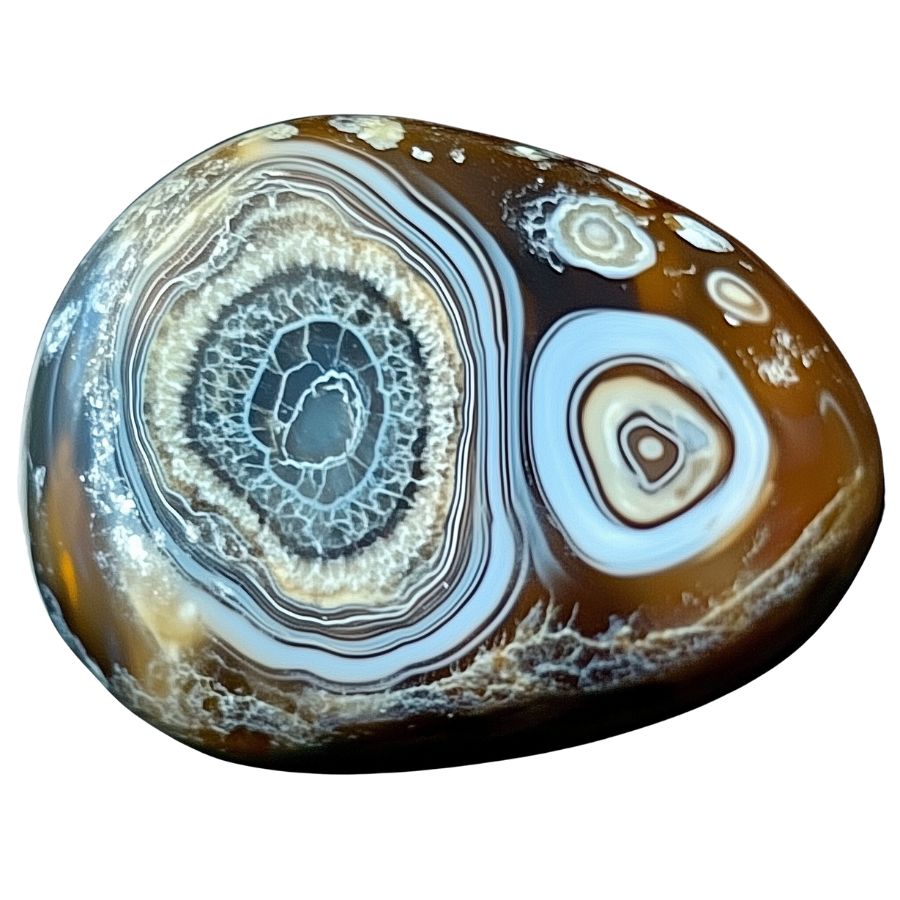
Agates
Agates are some of the most stunning rocks you can find, and they’re definitely worth the hunt here in Iowa. These banded beauties come in a variety of colors and patterns, making each one a unique treasure.
Why It’s Valuable
People prize agates for their beauty and variety. Their intricate patterns and vibrant colors make them a favorite for jewelry and decorative pieces. Even small, polished agates can hold significant value.
Great Places to Find It Here
If you’re eager to hunt for agates in Iowa, there are a few spots that stand out as prime locations:
- Creek Beds in Northeast Iowa – Creek beds, especially those near Decorah, often have agates in their sediment. Searching after a good rain can improve your chances of finding something special.
- Gravel Pits in Eastern Iowa – Many gravel pits in eastern Iowa yield Lake Superior agates brought down by glacial movement. Be sure to get permission before exploring private property.
- Sandbars Along the Cedar River – After heavy rains, the sandbars along the Cedar River can reveal agates mixed in with other rocks and pebbles.
Ready to explore? Discover everything you need to know about finding Agates in Iowa in our guide!
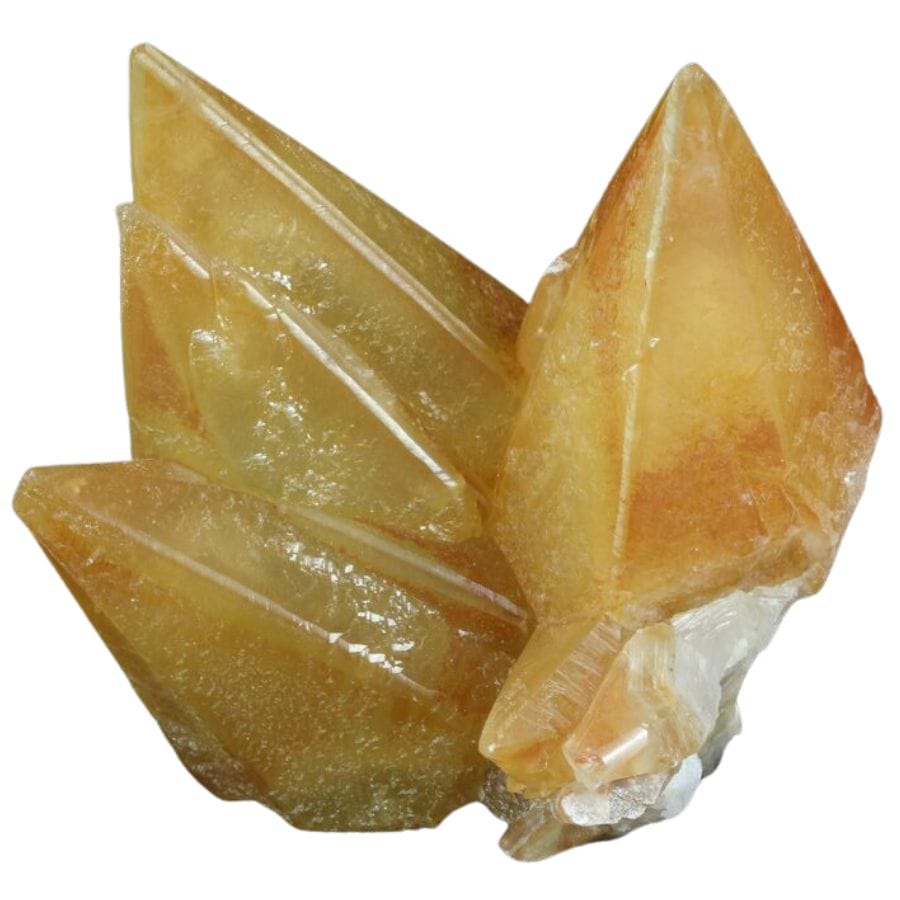
Calcite
Calcite is one of the most common minerals you can find in Iowa, but don’t let its abundance fool you—it’s fascinating and beautiful in its own right. Whether you’re drawn to its crystal forms or its wide range of uses, calcite is a rewarding mineral to seek out in the Hawkeye State.
What It Is and the Types Found in the State
Calcite is a form of calcium carbonate and is known for its striking crystal shapes, often appearing as clear or white rhombohedrons. It also comes in shades of yellow, orange, and gray, depending on impurities.
In Iowa, calcite is commonly found in limestone and dolomite formations, and you might even spot it as sparkling crystal veins in quarries or road cuts.
Why It’s Valuable
Calcite is valued for both its practicality and its beauty. Industrially, it’s used in cement and agriculture, but collectors love its variety of crystal shapes and the unique fluorescence it can display under UV light.
Its abundance makes it an accessible starting point for beginners, while its unique forms can still excite seasoned collectors.
Great Places to Find It Here
If you’re up for some calcite hunting, Iowa has plenty of excellent spots:
- Road Cuts in Southern Iowa – Exposed rock along highways and backroads can reveal calcite veins, especially after fresh roadwork or erosion.
- Limestone Quarries in Eastern Iowa – Many active and abandoned quarries in the eastern part of the state are known for calcite crystals. Be sure to get permission before entering.
- Mines of Dubuque County – Historical mining areas in Dubuque often reveal calcite in association with lead and zinc deposits.
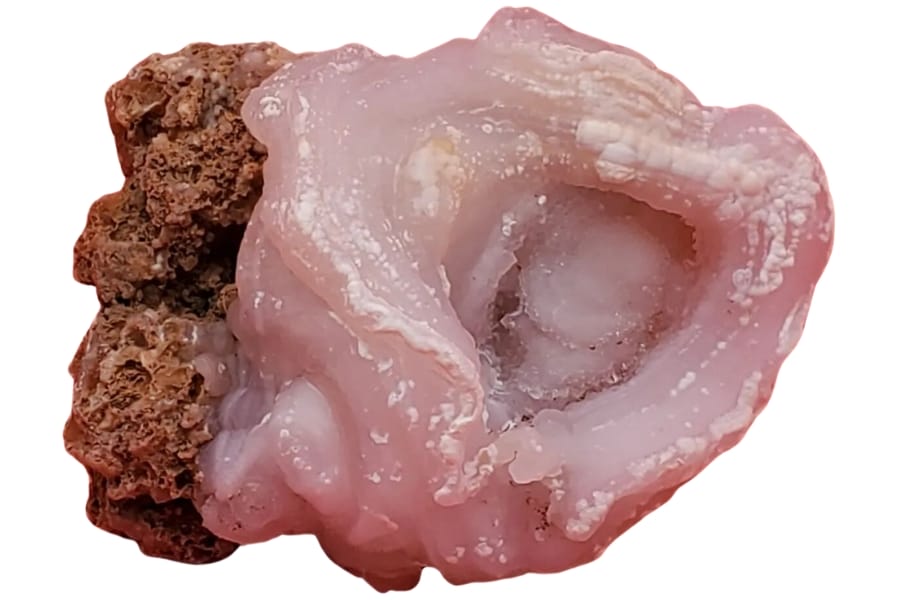
Chalcedony
Chalcedony is one of those minerals that feels almost magical when you find it. Its smooth texture, muted glow, and variety of colors make it a true treasure for any rockhound here in Iowa.
What It Is and the Types Found in the State
Chalcedony is a microcrystalline variety of quartz, which means its crystals are so tiny that they can’t be seen without a microscope. In Iowa, you’ll most often find it in shades of white, gray, and bluish tones, but it can also show up with hints of yellow or pink depending on its mineral impurities. Chalcedony typically forms as nodules or botryoidal (grape-like) structures in sedimentary rocks.
Why It’s Valuable
Chalcedony is valued for its smooth texture, subtle sheen, and wide range of uses. It’s used in everything from jewelry to carvings, and its durability makes it a favorite material for crafting. Collectors also love its subtle translucence and range of colors. Plus, pieces with particularly rare hues or patterns can fetch a good price.
Great Places to Find It Here
If you’re looking for chalcedony, Iowa has some prime spots for discovery:
- Road Cuts in Southern Iowa – Exposed rock along highways often reveals chalcedony in the form of small nodules or veins.
- Rivers and Streams in Central Iowa – Eroded riverbanks and gravel bars often reveal chalcedony nodules, especially after a heavy rain.
- Quarries in Eastern Iowa – Limestone and dolomite quarries are known for yielding chalcedony nodules, so keep your eyes peeled while exploring.
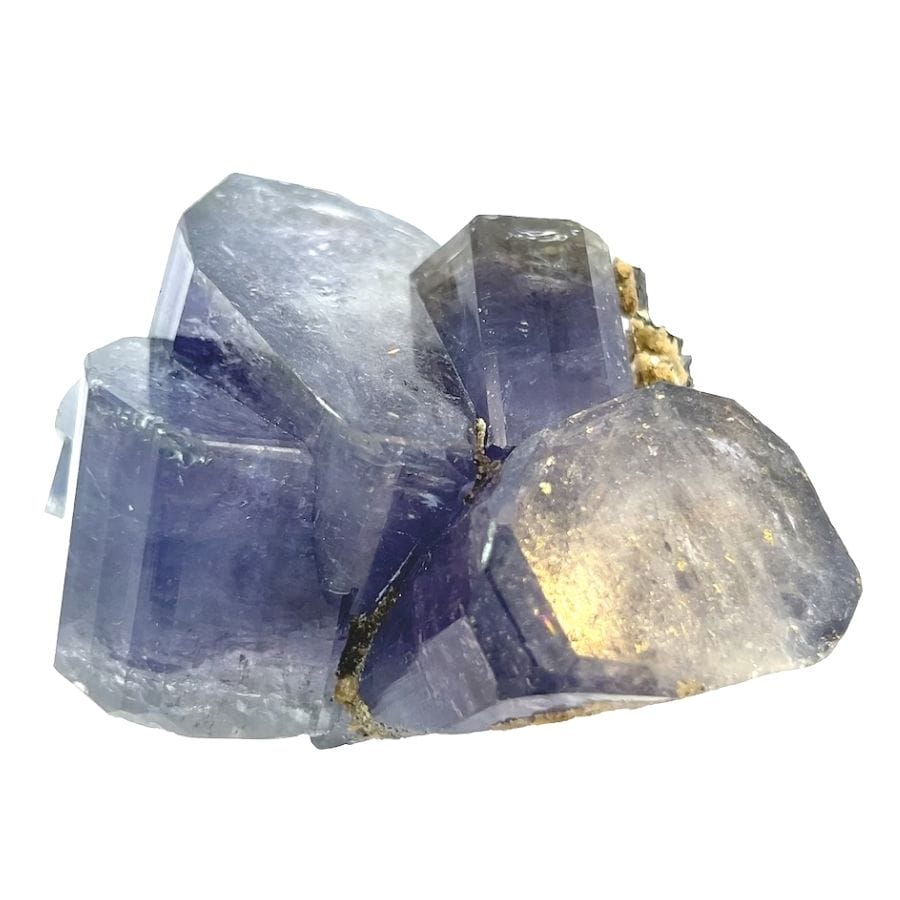
Apatite
Apatite might not be the first mineral that comes to mind when you’re out rockhounding, but finding it here in Iowa is a real treat. Its vibrant colors and unique crystal formations make it an exciting addition to any collection, whether you’re a seasoned pro or just starting.
What It Is and the Types Found in the State
Apatite is a group of phosphate minerals that comes in a variety of colors, including green, blue, yellow, and even purple. In Iowa, the most common type of apatite you’ll encounter is in its crystalline form, often found in sedimentary deposits.
While it’s not as abundant here as in some other regions, it does show up in small quantities in areas with exposed bedrock or gravel deposits.
Why It’s Valuable
Apatite is known for its bright shades and its appeal in both jewelry and artistic creations. Beyond its aesthetic appeal, apatite is also valuable for its phosphorus content, which is essential for fertilizers.
Great Places to Find It Here
If you’re looking for apatite, you’ll need to head to areas with exposed rock formations or gravel deposits. Here are a few great spots to start your hunt:
- Road Cuts near the Mississippi River – Rock exposures along roadways in this area have been known to contain traces of apatite.
- Riverbanks in Northeastern Iowa – Gravel bars along rivers can sometimes yield small apatite crystals, especially after floods or heavy rains.
- Limestone Quarries in Southeastern Iowa – Apatite can be found in cavities or pockets within the limestone, often as small but vibrant crystals.

